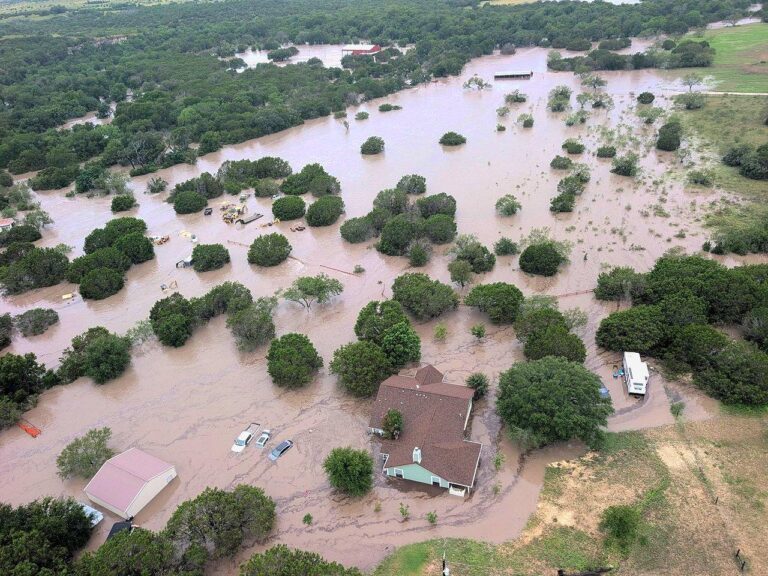Texas Floods: Assessing Infrastructure, Emergency Response, and Climate Resilience for the Future
Reevaluating Infrastructure and Community Strength Amidst Widespread Flood Damage
The recent catastrophic flooding in Texas has pushed the state’s infrastructure to its limits, revealing significant vulnerabilities across both metropolitan and rural landscapes. Vital transportation networks-including major highways and rail systems-sustained severe damage, interrupting supply chains and hampering emergency services. Additionally, essential utilities such as water treatment plants and electrical grids experienced extensive outages, exacerbating hardships for affected residents. Analysts point out that much of Texas’s infrastructure was originally constructed without anticipating the frequency and severity of such extreme weather, underscoring an urgent need for comprehensive modernization and climate-resilient engineering standards.
Community resilience presents a multifaceted challenge. While grassroots organizations and volunteers responded swiftly, disparities in preparedness and resource availability significantly influenced recovery speed. Research indicates that neighborhoods with strong social cohesion and prior investments in disaster readiness rebounded more quickly, whereas marginalized communities faced prolonged recovery periods. The table below highlights key elements influencing resilience outcomes:
| Resilience Factor | Positive Contributions | Challenges Encountered |
|---|---|---|
| Community Involvement | Swift mobilization of aid and information dissemination | Coordination difficulties in fragmented neighborhoods |
| Infrastructure Modernization | Advanced drainage systems mitigated localized flooding | Aging facilities vulnerable to failure |
| Government Assistance | Emergency funding expedited critical repairs | Administrative delays hindered timely aid distribution |
- Prioritize strengthening flood mitigation infrastructure such as levees and retention basins
- Upgrade communication systems to ensure rapid and clear disaster warnings
- Invest in social infrastructure that promotes equity and inclusivity in disaster preparedness
Understanding Climate Change’s Role and Preparing for Future Weather Extremes
The unprecedented flooding in Texas has reignited critical discussions about the influence of climate change on local weather patterns. Climate scientists emphasize that rising global temperatures-driven by increased greenhouse gas emissions-have intensified atmospheric moisture levels, fueling more powerful and erratic storms. This shift disrupts historical weather norms, resulting in flooding events that overwhelm infrastructure not designed for such extremes.
To effectively prepare for future climate challenges, Texas must adopt a comprehensive approach that balances mitigation with adaptation. Essential strategies include:
- Enhancing flood protection systems by modernizing levees and expanding urban green infrastructure
- Revising building regulations to accommodate heavier rainfall and prolonged storm durations
- Deploying advanced early-warning systems for real-time flood monitoring and public alerts
| Initiative | Expected Benefits |
|---|---|
| Restoration of Wetlands | Enhanced natural floodwater absorption and habitat preservation |
| Expansion of Renewable Energy | Lower greenhouse gas emissions, mitigating future warming |
| Community Awareness Programs | Improved public understanding of risks and preparedness measures |
Addressing Emergency Management Shortcomings and Proposing Strategic Reforms
The Texas floods have spotlighted significant deficiencies in emergency response frameworks. Disjointed communication among federal, state, and local agencies led to inconsistent evacuation directives, delaying critical assistance and endangering residents. Furthermore, outdated flood control infrastructure failed to contain the unprecedented water volumes, revealing gaps in long-term disaster planning. Resource distribution was uneven, disproportionately affecting vulnerable communities and exacerbating social inequities.
Comprehensive reform should focus on:
- Creating integrated communication platforms to facilitate seamless information flow and coordinated emergency actions
- Investing in robust, climate-resilient infrastructure capable of withstanding frequent extreme weather events
- Implementing equitable resource allocation guided by data to prioritize at-risk populations
- Conducting regular disaster simulations and community outreach to refine response plans and build public confidence
| Identified Policy Gap | Consequences | Recommended Reform |
|---|---|---|
| Disjointed Command Structure | Delayed evacuation notifications | Establish a centralized emergency operations center |
| Inadequate Flood Defenses | Extensive property and infrastructure damage | Upgrade levees and stormwater management systems |
| Unequal Distribution of Aid | Neglect of marginalized communities | Develop targeted support programs based on vulnerability assessments |
Fostering Economic Recovery Through Sustainable and Inclusive Investments
As Texas embarks on rebuilding efforts, there is a growing emphasis on fostering economic resilience rather than simply restoring pre-flood conditions. Policymakers and economic experts advocate for recovery initiatives that simultaneously stimulate job creation and enhance environmental sustainability. Projects such as upgrading stormwater infrastructure, expanding urban green spaces, and providing microgrants to local entrepreneurs are central to this vision. By channeling resources into ventures that blend economic revitalization with ecological stewardship, Texas aims to build a more durable foundation capable of withstanding future climate challenges.
Core components of this sustainable recovery model include:
- Employment generation: Focusing on jobs in construction, clean energy, and ecosystem management
- Inclusive community participation: Engaging diverse stakeholders to ensure recovery efforts meet local priorities
- Climate-smart infrastructure: Developing systems that reduce flood risk and promote biodiversity
| Investment Focus | Economic Benefits | Environmental Advantages |
|---|---|---|
| Green Infrastructure Development | High – generates skilled labor opportunities | Enhances water retention and mitigates flood risks |
| Support for Small Businesses | Moderate – stimulates local economies | Limited direct environmental impact |
| Renewable Energy Initiatives | High – fosters emerging industries | Reduces carbon emissions and supports climate goals |
Conclusion: Charting a Resilient Future for Texas and Beyond
As floodwaters subside and communities embark on the arduous journey of recovery, critical questions remain at the forefront. How can Texas rebuild infrastructure capable of withstanding increasingly severe storms? What role will climate change play in shaping future weather extremes? Most importantly, how will policymakers balance the urgency of immediate relief with the necessity of long-term resilience? The solutions forged in Texas will not only determine the state’s trajectory but also offer vital insights for flood-prone regions nationwide striving to adapt in an era of climate uncertainty.




